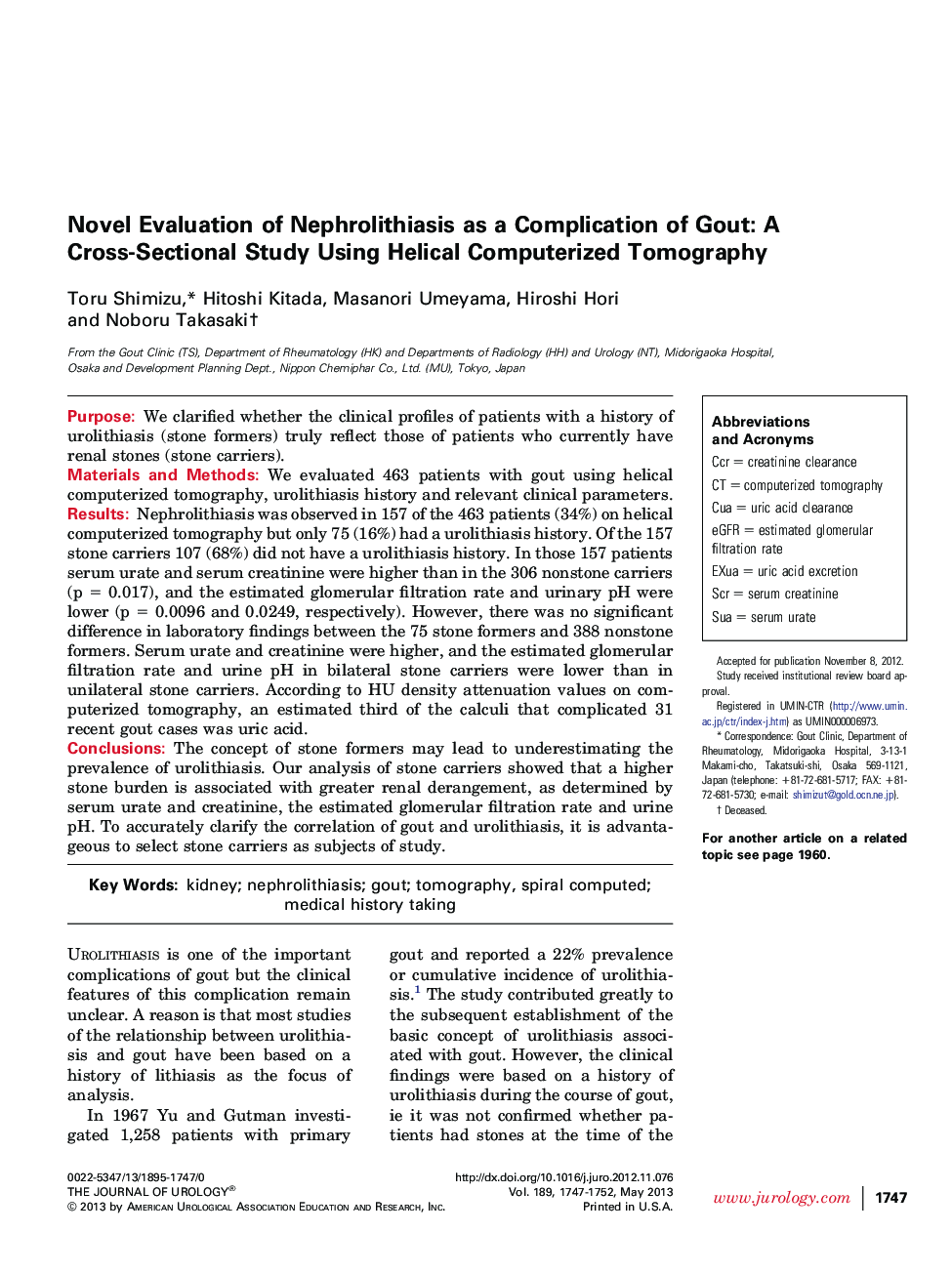| Article ID | Journal | Published Year | Pages | File Type |
|---|---|---|---|---|
| 3864766 | The Journal of Urology | 2013 | 6 Pages |
PurposeWe clarified whether the clinical profiles of patients with a history of urolithiasis (stone formers) truly reflect those of patients who currently have renal stones (stone carriers).Materials and MethodsWe evaluated 463 patients with gout using helical computerized tomography, urolithiasis history and relevant clinical parameters.ResultsNephrolithiasis was observed in 157 of the 463 patients (34%) on helical computerized tomography but only 75 (16%) had a urolithiasis history. Of the 157 stone carriers 107 (68%) did not have a urolithiasis history. In those 157 patients serum urate and serum creatinine were higher than in the 306 nonstone carriers (p = 0.017), and the estimated glomerular filtration rate and urinary pH were lower (p = 0.0096 and 0.0249, respectively). However, there was no significant difference in laboratory findings between the 75 stone formers and 388 nonstone formers. Serum urate and creatinine were higher, and the estimated glomerular filtration rate and urine pH in bilateral stone carriers were lower than in unilateral stone carriers. According to HU density attenuation values on computerized tomography, an estimated third of the calculi that complicated 31 recent gout cases was uric acid.ConclusionsThe concept of stone formers may lead to underestimating the prevalence of urolithiasis. Our analysis of stone carriers showed that a higher stone burden is associated with greater renal derangement, as determined by serum urate and creatinine, the estimated glomerular filtration rate and urine pH. To accurately clarify the correlation of gout and urolithiasis, it is advantageous to select stone carriers as subjects of study.
